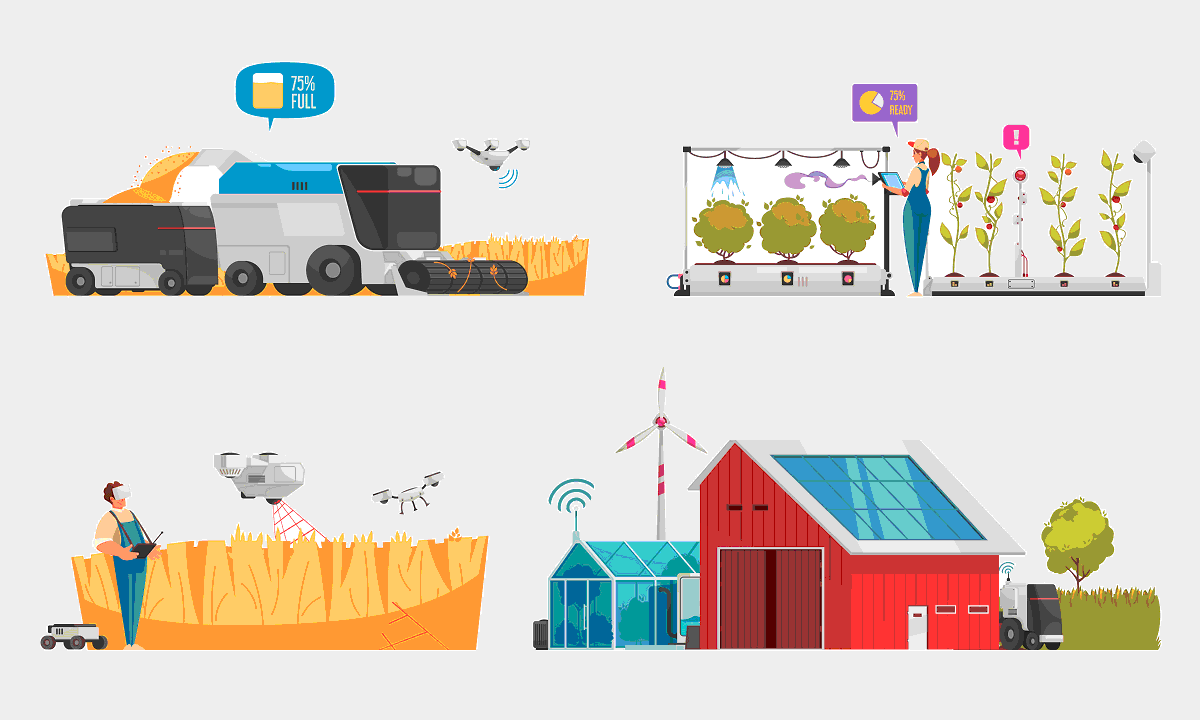
The use of renewable energy sources such as wind and solar power is increasingly being adopted in the agriculture industry. Renewable energy has the potential to revolutionize the way farmers produce and use energy, providing numerous benefits such as reducing dependence on fossil fuels, increasing energy efficiency, and contributing to sustainable farming practices.
Advantages of Wind and Solar Energy in Agriculture
Reducing Dependence on Fossil Fuels: The use of wind and solar energy in agriculture helps reduce dependence on fossil fuels, which are finite resources and have negative environmental impacts. Renewable energy sources are abundant and can be produced locally, providing farmers with a reliable source of energy.
Increasing Energy Efficiency and Profitability: Implementing wind and solar energy in agriculture can reduce energy costs, increase energy efficiency, and boost profitability. For example, a farmer in California installed a solar panel system on their farm and reduced their monthly electricity bill by 60%. Similarly, a gas switch Pennsylvania initiative is encouraging farmers to transition from traditional fuels to natural gas, further enhancing their operational efficiency.
Contributing to Sustainable Farming Practices: Wind and solar energy play a significant role in promoting sustainable farming practices. These renewable energy sources emit zero carbon emissions and do not contribute to climate change, making them an attractive option for farmers who are looking to reduce their carbon footprint.
Latest Technologies in Wind and Solar Energy
Wind Turbines: Wind turbines are devices that convert wind energy into electrical energy. They are designed to capture wind energy and generate power for farmers' use. Modern wind turbines are more efficient and reliable than their predecessors, and they can be installed on farms of varying sizes.
Solar Panels: Solar panels are devices that convert sunlight into electrical energy. They are a popular renewable energy source in agriculture, as they are easy to install and can generate electricity even in remote locations. Solar panels are available in various sizes, making them suitable for farmers with different energy needs.
Energy Storage Systems: Energy storage systems are devices that store excess energy produced by wind turbines and solar panels. This energy can be used during times when wind and solar energy are not available, providing farmers with a reliable source of power.
Government Policies and Incentives
Governments around the world are encouraging the adoption of renewable energy sources in the agriculture industry. They are providing financial incentives, such as subsidies and tax credits, to support farmers who are looking to switch to wind and solar energy. These policies are aimed at reducing the high upfront costs of implementing renewable energy, making it more accessible for farmers.
Case Studies and Examples of Successful Implementation
In Texas, a wind turbine project in a rural community increased local energy production and created jobs in the community. This project provided farmers with access to clean energy, reducing their dependence on fossil fuels and increasing energy efficiency.
Another example is a farmer in California who installed a solar panel system on their farm. The system reduced their monthly electricity bill by 60% and provided them with a reliable source of energy.
Potential Challenges
High Upfront Costs: One of the main challenges of implementing wind and solar energy in agriculture is the high upfront costs. These costs can be significant, making it difficult for farmers to adopt renewable energy sources.
Technical Expertise: Implementing wind and solar energy in agriculture requires technical expertise. Farmers need to understand the technology, installation process, and maintenance requirements to ensure that their renewable energy systems are functioning effectively.
Final Thought
In conclusion, wind and solar energy have immense potential to revolutionize the agriculture industry and contribute to sustainable farming practices. With their ability to reduce dependence on fossil fuels, increase energy efficiency and profitability, and reduce energy costs, renewable energy sources such as wind and solar energy have become increasingly attractive to farmers and agriculture industry professionals. The latest technologies in wind turbines, solar panels, and energy storage systems have made it easier to harness the power of these natural resources.
Governments around the world have also recognized the importance of renewable energy in agriculture and are offering policies and incentives to encourage its adoption. The case studies and examples of successful implementation of wind and solar energy in agriculture show that these technologies can bring tangible benefits to farmers and their communities.
However, the adoption of wind and solar energy in agriculture is not without its challenges. The high upfront costs and the need for technical expertise can make it difficult for farmers to make the switch to renewable energy sources. Nevertheless, the potential benefits of wind and solar energy in agriculture make it an exciting opportunity for the agriculture industry to move towards a more sustainable and profitable future.
As the world moves towards a greener future, renewable energy sources such as wind and solar energy will play an increasingly important role in the agriculture industry. By investing in these technologies, farmers and agriculture industry professionals can help create a more sustainable and profitable future for their businesses and the environment.
Agricultural Science

